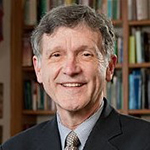 By Bill Leonard
By Bill Leonard
In a 2006 New Yorker story on writer Gertrude Stein, Janet Malcom wrote: “The instability of human knowledge is one of our few certainties. Almost everything we know we know incompletely at best. And almost nothing we are told remains the same when retold.” She illustrated that in specific events from Stein’s life, events misinterpreted largely because of the incorrect recounting of details.
As a new year begins, we’d best remember the enduring “instability of human knowledge” and its implications for our own spiritualities, confessing that where God, grace and gospel are concerned, “we know incompletely at best.” St. Paul said as much 2,000 years ago, writing to the troubled church at Corinth: “Is there knowledge? It will vanish away; for our knowledge and our prophecy are partial. …” Still, unable to relinquish a modicum of hope, he added: “but the partial vanishes when wholeness comes” (1 Cor. 13: 9). Surely another new year raises comparable challenge and promise.
Then there is Malcom’s sobering comment: “And almost nothing we are told remains the same when retold.” As a historian, that is the joy and bane of my existence. I’ve spent much of my adult life retelling the stories of dead people, knowing full well that such an effort is shaped (perhaps diluted) by my own vocabulary (language and rhetoric), identity (who I am and who I am not), audience (often students or congregants) and agendas (implicit and explicit). To reenter a sacred story or text is to risk “expanding” it a bit, knowingly or unknowingly. As one longtime colleague says, “Goliath got bigger every time David retold that story.”
Debates regarding biblical texts and their interpretation (hermeneutics) are as old as the church. Second century bishop Irenaeus of Lyons wrote that when heretics “are refuted out of the Scriptures they betake them in accusing the Scriptures themselves as if there were something amiss with them and they contain diverse utterances. …” Roman Catholics, ancient and modern, read Jesus’ words, “Thou art Peter, and upon this rock I will build my church,” very differently from Reformation Protestants who rejected papal authority, while today’s populist Protestantism sums it all up with, “The Bible says it; I believe it; and that settles it.” Two millennia after “the Word became flesh,” we still contend with sacred texts, frequently intensifying disputes over their authority and content.
For years I engaged in “Baptist battles” that related less to the biblical text than to certain theories about it — the expanse and/or boundaries of its divine inspiration. I finally realized that such ideological skirmishes often kept me from the text itself, and determined to put my energy into contending with the text and allowing the text to contend with me. Amid the continuing “instability of [my own] human knowledge,” the text of Scripture became more captivating and bewildering, insightful and infuriating, than I had known before, carrying me into issues and actions I’d never thought or preferred not to go. Now I’m less concerned with defending the text than contending with it.
Sometimes the text is all there is. Several years ago at a wonderful/terrible conference on “Spirituality and the Shoah: Sixty Years After,” I heard University of Virginia professor Peter Ochs discuss the work of a prominent holocaust survivor, one of the world’s foremost authorities on the Talmud, that collection of commentaries on the Mishnah, the oral Torah of the Jews and the center of rabbinic law. Ochs cited the rabbi’s assertion that “Judaism was born in the relationship between Torah and Talmud.” When sent to the Warsaw Ghetto, the rabbi recalled, “I put my mind inside the Talmud,” and lived an “imaginary life.” But when sent to Auschwitz, he acknowledged, “my imaginary life stopped.” There, he said, “we clung to the book but were consumed by the sword.”
The Holocaust, he believed, was a sign of God’s absence from the world when, to facilitate human freedom, God deserted humanity, particularly the Jews. And God has not returned. Through it all, he studied Talmudic texts because, while God may be absent, the text remains a small sign of hope. In a society consumed less by swords than by AK47s, can contending with ancient texts offer hope when “Jesus hides himself,” as the Imitation of Christ suggests?
Contending with these texts is no mere academic exercise, since they can inspire destructive fanaticism as well as prophetic reform. As Columbia University professor Mark Lilla observed in a New York Times Magazine essay:
“Today, we have progressed to the point where our problems again resemble those of the 16th century, as we find ourselves entangled in conflicts over competing revelations, dogmatic purity and divine duty. We in the West are disturbed and confused. Though we have our own fundamentalists, we find it incomprehensible that theological identities still stir up messianic passions, leaving societies in ruin. We had assumed this was no longer possible, that human beings learned to separate religious questions from political ones, that fanaticism was dead. We were wrong.”
If Lilla is right, amid the inherent “instability” of human knowledge, we’d best learn when to contend with sacred texts, and when to let (some of them) go. Happy New Year!
